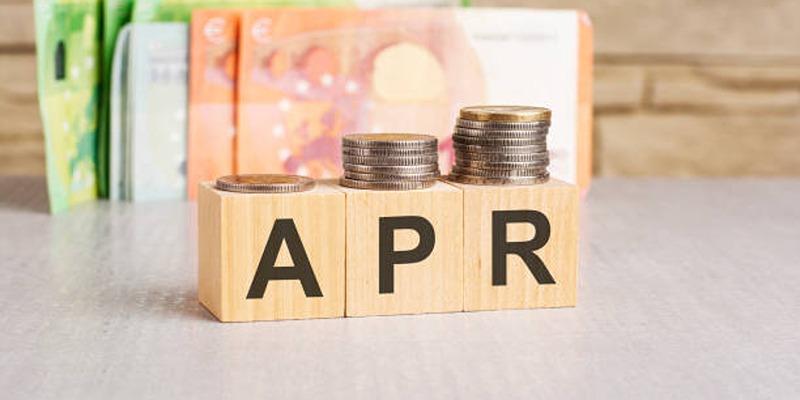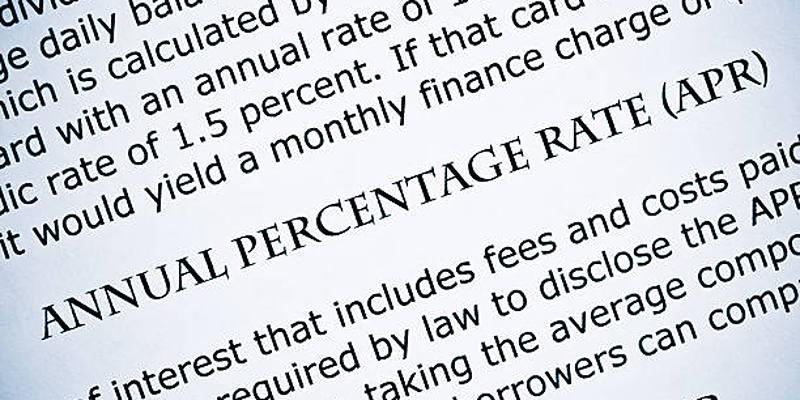APR Explained: How It Affects Your Loans and Credit Cards
Understanding the Annual Percentage Rate (APR) is fundamental in the realm of personal finance. It's a critical factor to consider when you're looking at loans or credit cards, as it significantly influences the total cost of borrowing. This article aims to demystify APR, explaining its impact on financial decisions and offering insights to guide you in making well-informed choices.
What is APR?
APR, which stands for Annual Percentage Rate, represents the yearly interest rate applied to borrowed funds. This metric is comprehensive, encompassing not just the nominal interest rate, but also any additional fees or costs associated with a loan or credit card. These can include origination fees, processing fees, or even annual fees, depending on the financial product in question.
The APR offers a consolidated view that provides a standardized method for comparing the true costs associated with various financial products. This makes it easier for borrowers to assess the overall expense of loans and credit cards, facilitating a more informed decision-making process when choosing between different financial options.
The Components of APR:
- Nominal Interest Rate: This fundamental rate, which is applied directly to the borrowed principal amount, serves as a crucial component in the calculation of the Annual Percentage Rate (APR). It plays a key role in determining the cost of borrowing over the course of a year, incorporating not only the interest rate itself but also any additional fees associated with the loan.
- Fees and Charges: Additional costs, including origination fees or annual charges, also play a crucial role in determining the APR, which reflects the comprehensive cost of borrowing. These fees are added to the total loan amount, providing a more accurate representation of the loan's true cost over its lifetime.
- Introductory Rates: Certain financial products entice customers with reduced introductory Annual Percentage Rates (APRs), aimed at lowering the initial cost of borrowing. These appealing rates, however, are only temporary and will ultimately transition to the product's standard APRs.
- Variable APR: Unlike fixed Annual Percentage Rates (APRs) that remain constant over the duration of the loan, variable APRs can fluctuate, changing in response to shifts in the market or specific conditions that are detailed in the borrowing agreement. This means that the interest rate you initially receive might increase or decrease in the future, depending on various economic factors or benchmarks set forth in your loan terms.
The Influence of APR on Loans and Credit Cards:

Borrowing Costs:
A higher Annual Percentage Rate (APR) results in increased costs over the entire lifespan of a loan. Even seemingly minor differences in APR can have a significant impact, leading to substantial variations in the total amount that needs to be repaid. This is because the APR reflects not just the interest rate, but also includes any fees and charges associated with the loan, making it a more comprehensive measure of the loan's cost. Therefore, understanding and comparing APRs is crucial for borrowers aiming to minimize their financial burden.
Monthly Payments:
Monthly payments that borrowers are required to make on loans are directly influenced by the Annual Percentage Rate (APR). A higher APR means that the cost of borrowing is increased, necessitating higher monthly payments to cover both the principal amount and the interest accrued over time. This relationship underscores the importance of considering the APR when evaluating loan options, as it significantly impacts the overall financial burden of the loan.
Credit Card Debt:
Credit cards are known for their higher Annual Percentage Rates (APRs), which means that if you fail to pay off your monthly balances in full, you can end up accruing substantial interest charges. This can quickly escalate, potentially trapping you in a cycle of debt that is difficult to break. It's crucial for credit card holders to be mindful of their spending and payment habits to avoid these financial pitfalls.
Loan Comparison:
Comparing Annual Percentage Rates (APR) is a vital step in the process of shopping for loans or credit cards, as it directly impacts the total cost of borrowing. However, it's important to not solely focus on APR. Other aspects, such as repayment terms, which dictate how long you have to pay back the loan or credit, and the quality of customer service, which can significantly influence your experience and satisfaction, should also be carefully considered to make a well-rounded decision.
Credit Score Impact:
Your credit score plays a crucial role in determining your eligibility for favorable Annual Percentage Rates (APRs) on loans and credit cards. Missing payments or maintaining high balances relative to your credit limits, known as high credit utilization, can negatively impact your credit score. Maintaining a good credit score is essential for securing loans with lower interest rates, saving you money over time.
Strategies for Managing APR:

- Boost Your Credit Score: A higher credit score can secure lower APRs. Timely bill payments, low credit card balances, and few credit inquiries are effective methods to improve your credit score.
- Negotiate with Lenders: You might negotiate a lower APR if you have a solid credit history or relationship with the lender.
- Exceed the Minimum Payment: Paying more than the minimum monthly payment can reduce the principal balance quicker, decreasing the total interest paid.
- Refinancing: Refinancing high-interest debt to a lower APR can relieve financial pressure and lead to savings over time.
Conclusion:
APR is a crucial metric for evaluating borrowing costs and managing personal finances. A thorough understanding of APR and its effects enables you to make choices that align with your financial objectives. Comparing APRs, striving to improve your credit score, and practicing responsible borrowing habits are pivotal steps towards minimizing interest expenses and securing financial well-being.












